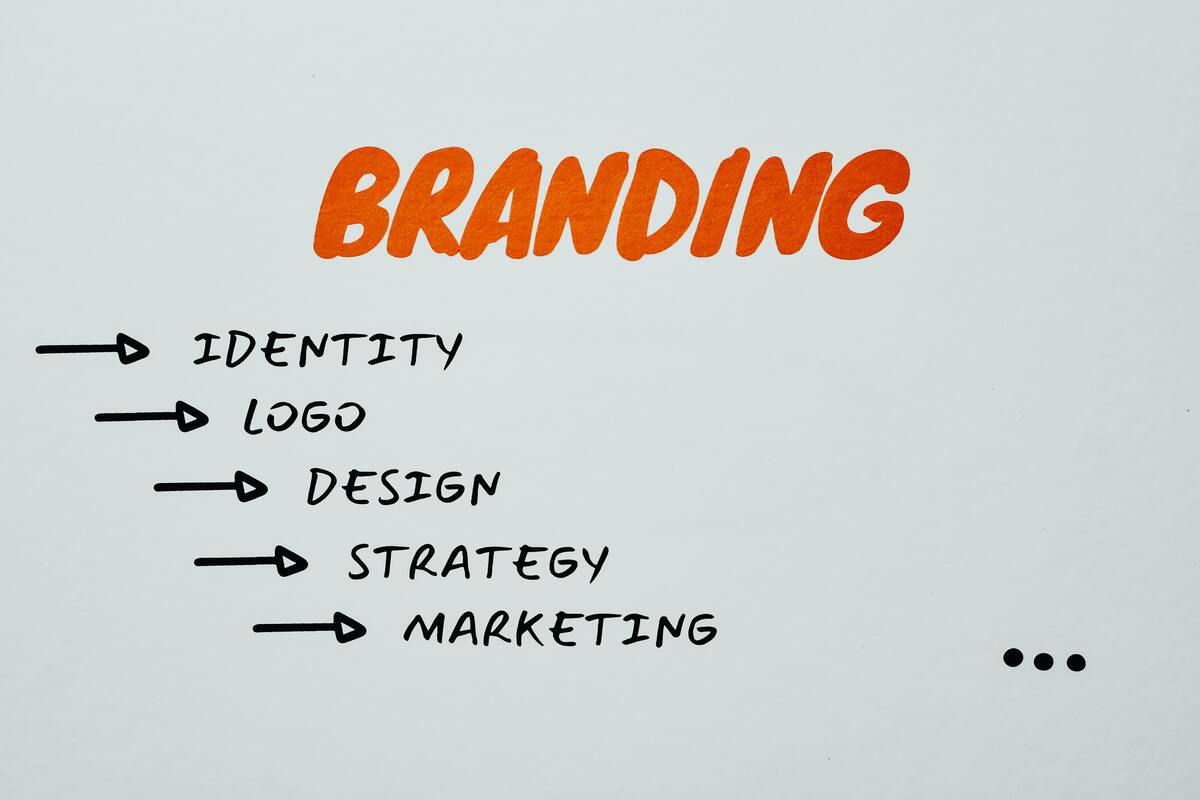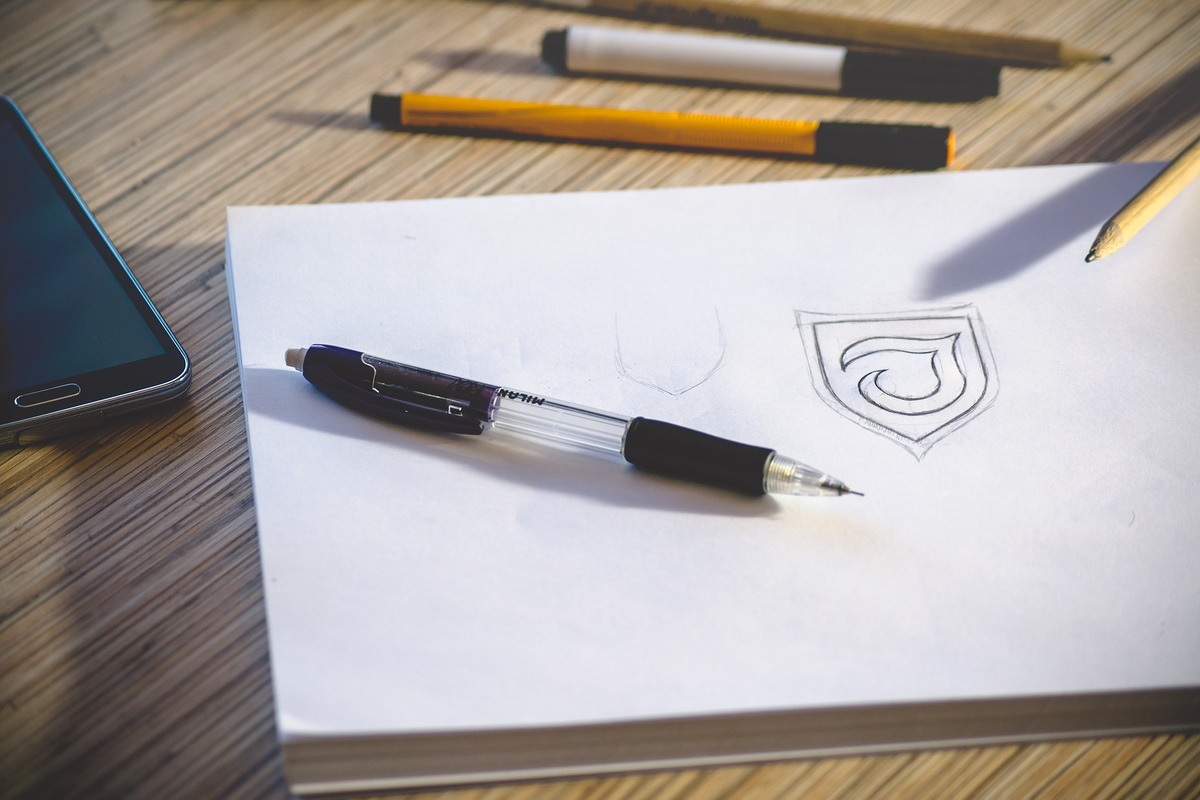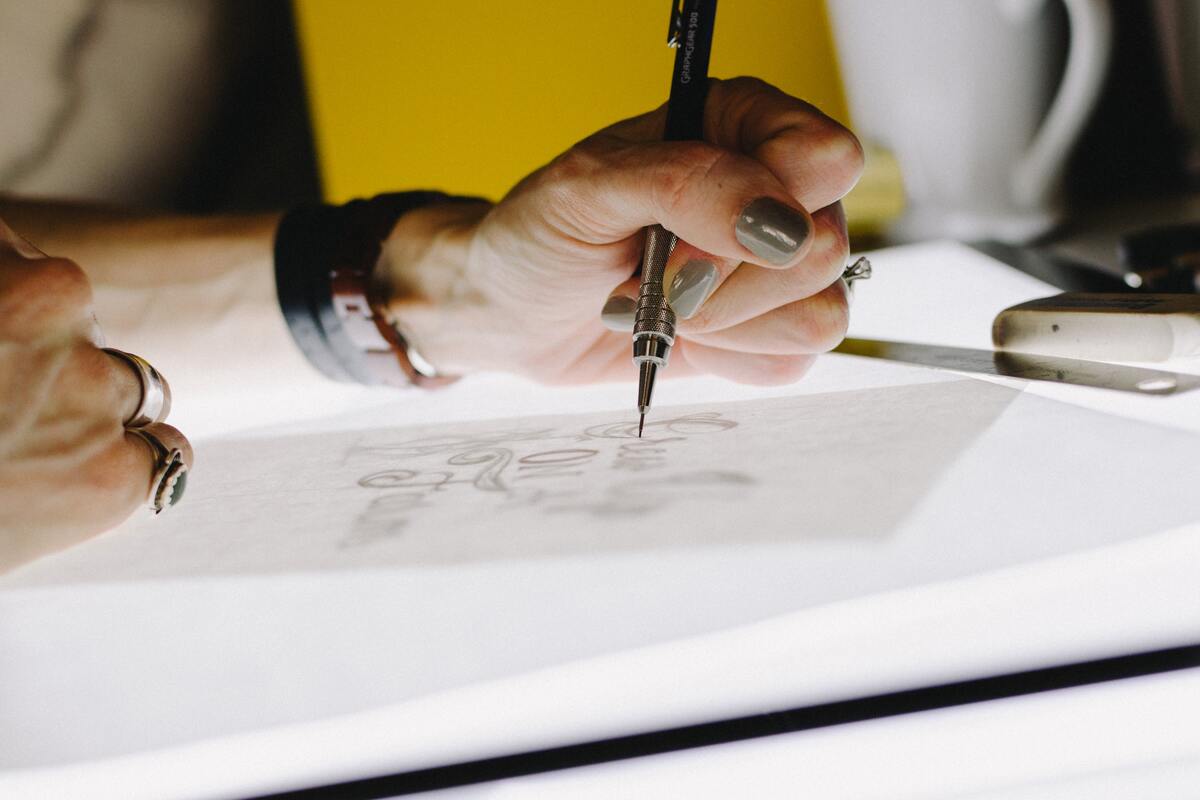A brand’s logo is its public face. It may appear to be a phrase or an image, but it identifies a company and promotes brand identification.
Through an instantly recognizable visual representation, logos symbolize a specific business or group.
A logo usually consists of symbols, stylized words, or both. Frequently, a graphic designer works with business and marketing professionals to produce a logo.
Logos are made up of letters and graphics that convey information about your company and can be found on:
- Your website
- Social media profiles
- Business cards
- Marketing materials
- Email signatures
- Letterheads
- Storefronts
- Banners
It’s crucial to understand that logo design is simply one aspect of branding everywhere you want your company to be known.
Because your brand will be at the center of every interaction with a customer throughout their journey, consistency is crucial to ensuring that it is ingrained in the consumer’s psychology and remains prominent in their minds.

What Is The Purpose Of A Logo?
Your brand’s logo serves to advertise and identify it. It establishes credibility and professionalism by satisfying a fundamental consumer need to know what you offer, what makes your brand unique, and what it stands for.
Finding the ideal combination that gives your brand its personality and sets it apart from your rivals is the art of logo design.
Your logo should have a distinctive style that makes what you sell apparent while including some of your USP and brand values.
Ultimately, it should establish a solid visual link with your business and foster an emotional bond with your target audience.
Yes, some well-known companies (Apple and McDonald’s are two excellent examples) have logos that don’t exactly correspond to what they do, but since they are already well-known worldwide, they have earned the right to do so.
In 1948, McDonald’s even used the phrase “Famous Hamburgers” to describe its offering.
Furthermore, the original version of Apple’s logo looked considerably different from the design familiar today.
How Many Types Of Logo Designs?
Typically, logo designers will discuss the following seven categories of design:
Wordmarks:
Watermark uses your name as your logo. It is a good choice if you have a memorable name for your business.
A wordmark logo’s success depends on getting the typography and color palette right. Google and Disney are two obvious examples.
Lettermarks:
Similar to wordmarks, letter marks only employ letters. It is frequently used to shorten a company’s full name and make it easier to pronounce when it is too long for a logo or as part of a rebranding process.
How a letter mark logo would appear on a user’s phone’s app menu is a key factor to consider while creating it.
The letter marks HBO and HP are two examples. The rise of applications has raised interest in letter marks.
Pictorial Marks:
Pictorial marks often consist of just one image to represent a brand. The logo is a worldwide representation of the brand even when seen by itself, albeit occasionally accompanied by the name or tagline.
A complete brand image and mission can be summarised in a single symbol by someone with an artistic vision. An illustration of a visual mark is the Nike tick.
Combination Mark:
Symbols and words or letters are combined in combination marks. A memorable logo that displays the brand name and explains what the company does was made by Burger King by sandwiching the words of its name between two cartoon hamburger buns.
Abstract Logo Marks:
Abstract logo marks use unique, often bespoke designed, symbols. It’s simple, memorable, and distinctive. Spotify is a prime illustration of a successful abstract logo mark.
The three lines show this innovative company at the forefront of the digital revolution.
An abstract logo mark is a fantastic method to make people feel your brand is distinctive and worth supporting.
Mascots:
Logos with mascots are frequently used for goods marketed to children and families. They include anthropomorphic characteristics in their design, making a character the face of the company.
Even though you may not know who Rich Uncle Pennybags is, you can’t help but recognize him as the Monopoly game’s mascot the moment you see him.
Emblems:
Emblems typically combine text and graphic elements to create crest, seal, or badge-like designs. Emblems can be challenging to design since they appear stuffy and outdated, but if you want your logo to project an air of authority, they might assist.
Of course, you don’t have to limit yourself to a single logotype. Combining several components lets you express your creativity and produce something distinctive and memorable.

What Are The Five Principles Of Logo Design?
Taking a step back and evaluating your design concepts objectively is one of the hardest parts of creating a logo. It’s crucial to resist getting stuck on your initial concept or letting personal preferences guide you.
Balance is the key to good design. Anything overly cliche or generic will not stand out or seem poorly thought out. Something overly contemporary will fail to convey a sense of authority and longevity and will age soon.
Fundamentally, your logo emphasizes key aspects of your business. That could be your line of employment, your geographic area, your target market, your ethos, or anything else that will pique the interest of your audience.
Your logo design decisions and iterations should be based on the five principles to ensure that you’re continually striving to produce something that generates revenue.
Ask yourself whether your logo design is:
Memorable:
Here, finding the ideal balance is essential. Starting, it’s critical that your logo design captures what you do and has a distinctive quality that sets it apart from the tens of thousands of other logos consumers encounter daily.
To ensure your logo is distinctive, significant, and memorable, concentrate on the narrative or ethos upon which your brand is based.
Relevant:
Relevance in logo design refers to being passionate, reliable, or both. It’s crucial that your logo engages your audience and evokes the emotions you seek from them.
If you’re trying to market a subscription service, the logo must make them feel like they’re a part of something.
It’s more crucial for a funeral home’s logo to convey solemnity, seriousness, and respect.
Simple:
Nobody wants to exert themselves to view your logo. The world’s best and most enduring logos are frequently the most straightforward. Please be brief and straightforward.
Timeless:
While joining the latest trend is OK, there is more to your social media presence than that. A logo that you wanted to last at least ten years would be beneficial.
It not only gives you the best chance to establish your brand in people’s thoughts but also saves you from spending your hard-earned money renewing your logo regularly.
Scalable:
Your logo must be flexible enough to adapt to various advertising possibilities and scenarios without needing to be altered.
It needs to work on everything, including social media accounts, billboards, and any other possibilities the Metaverse may present.
Your logo must be usable across all of these platforms and more without losing any of its significance or quality.
What Components Make Up A Logo Design?
Good logo design relies on three key components that must work together to strengthen and complement one another.
- Typography
- Imagery
- Color
Remember the saying that your brand’s logo should be greater than the sum of its components while creating one.
All these are optional, but you should research them and consider how they might improve your logo.
Ultimately, you should be able to justify your design choices, regardless of whether you use text, graphics, or both and what color scheme you select.
Typography:
When you look at how to start with logo design, you’ll often hear the word ‘typography.’ It means ‘font’ and refers to the style of lettering you choose.
The choice you make will have a significant impact on how your brand is viewed. The font you select should go well with your USP and the elements of your logo.
There are countless fonts available, and a logo designer can create one for you.
Fonts are broadly categorized into four styles:
- Serif Fonts – are classic and offer your text a timeless appearance. The little “feet” at the base of each letter are called serifs. They can still be employed as a component of modern logo design, even if they are only occasionally extremely pronounced.
- Sans Serif – is Latin for “without serifs.” The letters have a crisp, contemporary appearance thanks to this style.
- Script Fonts – mimic the appearance of handwritten writing. There are many styles, including calligraphy and kid’s writing.
- Display Fonts – have a lot of ornamentation and stylization. Although they are detailed and challenging to get right, designing these can be a lot of fun. With the other font options, it is impossible to make a mistake that would be too noticeable, but even the smallest design flaw may make a display font look cheesy.
If you decide to add a tagline to a wordmark or lettermark logo, it should be in a distinct typeface.
The two fonts must harmonize, and the overall styles must be consistent. In most cases, two typefaces are thought to be the limit for a logo design, but if the design calls for or permits a third, you may choose to do so.
Although not necessary, a tagline can offer context to a logo or help it stand out from the crowd.
Imagery:
Anything can be imagery, and it frequently calls for an aesthetic eye. It may be simpler for your logo to stand out if you select an image that accurately represents your work, such as a car for a garage.
However, choosing something too abstract could prevent you from effectively demonstrating what you do or connecting with your target audience.
Color:
Color psychology is a standalone subject that considerably impacts branding and logo design.
You don’t always need to rely on specialists when choosing the perfect color palette for your brand. One of the beautiful things about color psychology is that it is something we can all grasp if we take a moment to contemplate the impact color has on our mood.
Here is a rundown of how color affects logo design:
- Red is a symbol of enthusiasm and energy. It screams out for attention and is loud and bold.
- Orange is a very upbeat hue since it is youthful, spirited, and lively.
- Happy yellow denotes friendliness, affordability, and accessibility. It can cause a scroll to stop because it is the hue that the human eye can see best.
- Green has long been associated with vitality, peace, and the natural world. Brands wanting to represent themselves as environmentally responsible now turn to it first.
- Blue can help generate confidence with your key USP because it represents reliability and blends with any other color.
- Purple is a majestic hue that denotes wealth. It can also give your brand a hint of mystery and depth.
- Pink has always been associated with femininity, and it still does to some extent. However, the range of colors (from delicate pastel pink to garish neon pink) makes it adaptable.
- Although brown may not be a hue that is frequently used in marketing, it may successfully represent your brand’s core values of artisanal, handmade, and tough.
- Gray is a serious, grown-up color that can add interest to a minimalist logo design that might otherwise look flat.
- Black is strong and competent. It has a significant impression and radiates elegance, refinement, and power.
- White denotes innocence, openness, and modernism. It also provides the perfect backdrop for other colors to stand out.
Taking only the necessary steps when selecting the colors for your logo design is crucial. If more than three colors are present, the patchwork of the others will likely make the meaning of each one clear.
Remember that your logo aims to catch your target audience’s attention and entice them to learn more about your company.

How To Design A Logo For Free?
You may entirely develop your logo design for free on countless websites. It might be the wisest choice for certain people. It is a false economy for others.
Free software can provide a good logo if you want to use it on stationary, your website, and the images you use for social media profiles. You can begin spreading the word to let your target market know that you are there.
However, there are some significant problems with DIY logo design:
- Your logo won’t stand out and will appear generic.
- The assistance of talented creatives needs to increase.
- Due to limited fonts and imagery, creating something that truly represents your brand is almost impossible.
- Fewer features are available. Developing a logo that only resonates with your audience can take a long time.
The selection of the artwork, font, and color scheme will require the same degree of planning.
Why Is It Best To Hire A Logo Designer?
Designing your logo is rarely a good idea, even if you have an artistic eye and some technical design knowledge, for several reasons:
- Managing your business requires your attention and must be supported.
- The best design concepts frequently take longer than you expect and involve collaboration.
- The greatest tools are too expensive to buy for a one-time assignment, but experienced designers already have them. High-quality designs demand the best instruments, which they already own.
- Professional logo designers are knowledgeable about the most recent developments in design.
- Additionally, they are aware of the styles and methods that have endured the test of time.
You could choose a design agency to help with your logo design, but they tend to be more costly than self-employed ones.
Self-employed usually have fewer overheads, and this translates into better rates. They also have greater flexibility when it comes to negotiating prices or deliverables.
While your intention is for your logo to last more than a decade, there are other reasons you might want design services over the coming years.
Establishing a relationship with an agency is feasible, but they may have different designers when you return to them in two or three years.
Design is very personal, and when an individual leaves an agency, their particular spark goes with them. Working with a trusted freelancer ensures consistency across all design tasks.
It also means the individual you work with in future design tasks knows your business and has already established a way to express your brand identity and values through symbolism.
How And Where To Find A Logo Designer?
Finding a self-made employee logo designer online is easy. Finding one you know you can trust is slightly more challenging.
Naturally, every designer describes themselves using words such as ‘innovative,’ ‘professional,’ and ‘reliable.’
You can usually find portfolios on Behance, Dribble, and Pinterest, as well as the designers’ websites.
Often, designers for hire have professional social media profiles, so it’s common to find someone posting their works on Instagram.
Only with independent reviews can you determine which ones have a body of work that reinforces their claims.
Check out the best online marketplace. You can find top logo designers from across the globe and check out their portfolios and reviews for peace of mind and confidence.
Conclusion:
The way of representing the face of a brand is called logo design. It requires a lot of effort and time.
Becoming a logo designer is easy; you must be creative. The five important features of logo designs should be memorable, relevant, simple, scalable, and timeless.
There are also different types and elements of logo designs. You can design your logo and also hire designers from online platforms.



